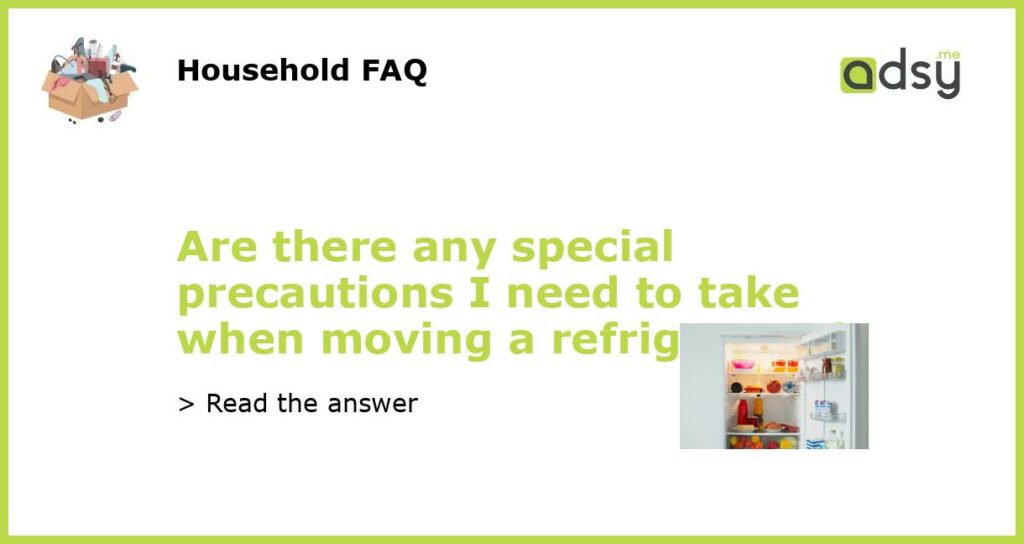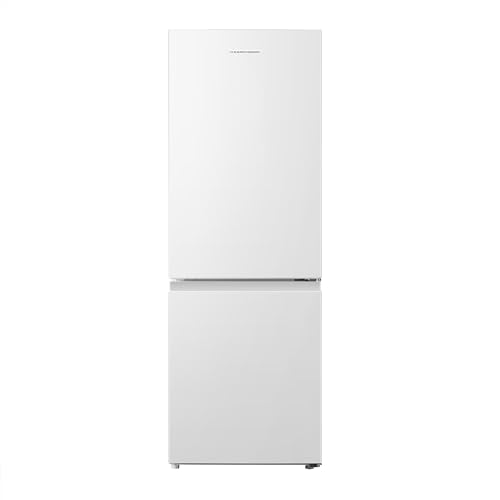Clearing and cleaning
Before moving a refrigerator, it is important to clear out and clean the inside of the appliance. Start by emptying the contents of the refrigerator and freezer compartments. Dispose of any perishable items or transfer them to a cooler for temporary storage. Remove all shelves, drawers, and other removable parts. This will not only make the refrigerator lighter, but also prevent any items from shifting or getting damaged during the move. Once the refrigerator is empty, wipe down the interior walls, shelves, and drawers with a mild cleaning solution. This will help remove any stains or odors and ensure that your refrigerator is ready to use once it is installed in its new location.
Defrosting and disconnecting
Another important precaution to take when moving a refrigerator is to properly defrost and disconnect it. Most modern refrigerators have an automatic defrost feature, but if yours doesn’t, it’s essential to manually defrost it before moving. Turn off the refrigerator and freezer compartments, unplug the appliance from the power source, and open the doors to allow the ice to melt. This will prevent water leakage during the move. Once the ice has melted, empty the water from the drip pan or drain hose. Next, disconnect the water supply if your refrigerator has an ice and water dispenser. This may involve shutting off the water valve and disconnecting the water line. Be sure to follow the manufacturer’s instructions for your specific refrigerator model to avoid any damage.
Securing and protecting
To ensure that your refrigerator arrives at its new location in good condition, it is important to properly secure and protect it during the move. Start by securing any movable parts, such as the doors and shelves, using tape or straps. This will prevent them from opening or getting damaged during transportation. Next, wrap the entire refrigerator in protective materials, such as moving blankets or bubble wrap. This will help protect the exterior from scratches, dents, or other damage. Secure the wrapping with tape or moving straps to ensure it stays in place. If you are using a moving company, they may also provide specialized equipment, such as straps or dollies, to safely transport the refrigerator. These can help minimize the risk of accidents or injuries during the move.
Proper lifting and moving techniques
When it comes to moving a refrigerator, proper lifting and moving techniques are crucial to avoid injury to yourself and minimize the risk of damage to the appliance. Always lift with your legs, not your back, to avoid strain. Before lifting, make sure you have a clear and unobstructed path to the new location. If possible, enlist the help of another person to assist with the lifting and carrying. Use proper lifting straps or dollies to make the process easier and safer. When moving the refrigerator, be mindful of any narrow doorways, staircases, or other obstacles that may require additional maneuvering. Take your time and be cautious to avoid dropping or bumping the refrigerator against walls or furniture. If you are unsure of your ability to safely move the refrigerator, it is best to hire professional movers who have the experience and equipment to handle heavy appliances.
Allowing for proper settling and cooling
Once the refrigerator has been safely transported to its new location, it is important to allow it to settle and cool before plugging it back in. This is especially important if the refrigerator was tilted or laid on its side during the move, as it needs time for the internal fluids to settle back into their correct positions. Experts recommend waiting at least 4-6 hours before plugging in and turning on the refrigerator. This will give it enough time to stabilize and prevent any potential damage to the compressor or other internal components. Once the refrigerator has settled, reconnect it to the power source and let it cool to the desired temperature before restocking it with food. It is also a good idea to check for any water leakage or unusual noises during the initial startup to ensure that the refrigerator is functioning properly.




![COMFEE' RCD93WH1(E) A Under Counter Fridge, 93L Fridge with Cooler Box, Interior Light, Removable Glass Shelf, Reversible Door Hinge, Adjustable Legs, White [Energy Class F]](https://m.media-amazon.com/images/I/51SGR0VK5ZL.jpg)

